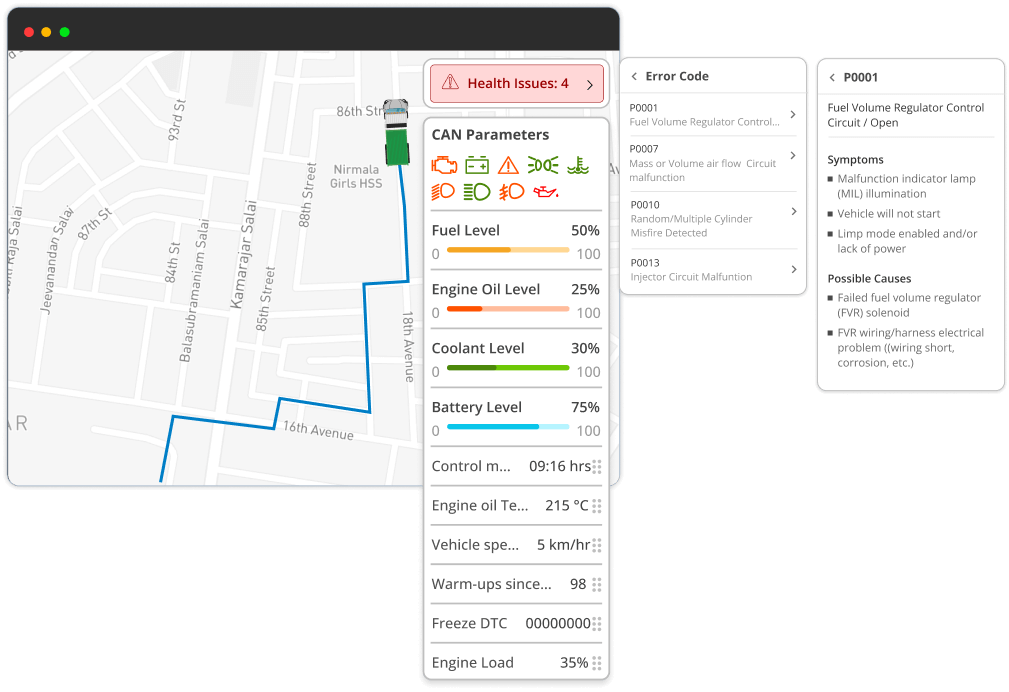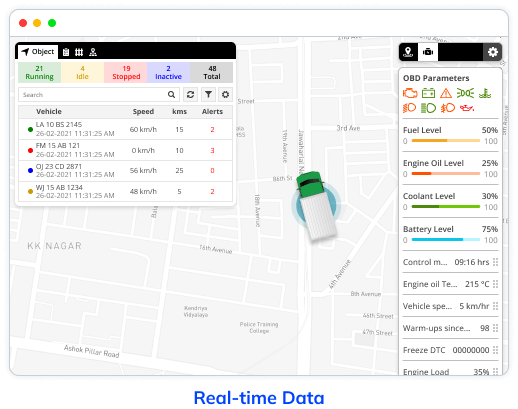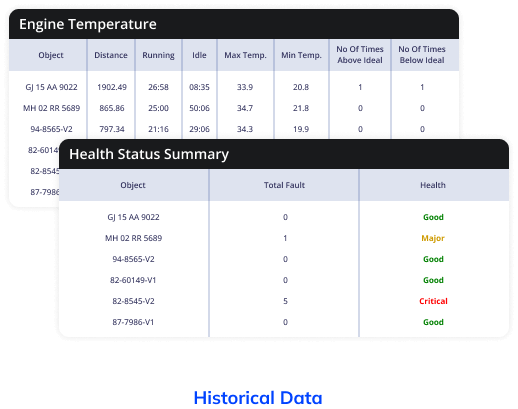Logistics and supply chain management companies are increasingly turning to technology to optimize their operations and improve efficiency. One technology that has become increasingly popular in the industry is vehicle health monitoring, which can be used to monitor and diagnose issues with fleet vehicles.
Introduction
Challenges
Vehicle Downtime: Unplanned maintenance and breakdowns disrupt delivery schedules, leading to delays and customer dissatisfaction.
Maintenance Costs: High maintenance and repair costs impact the profitability of the logistics operation.
Fuel Efficiency: The company aims to reduce fuel consumption and operating costs to remain competitive.
Environmental Impact: Minimizing emissions and reducing the environmental footprint of the fleet is a corporate priority.
Challenges

Solution
Real-time Vehicle Monitoring: Equip each vehicle with telematics devices and sensors to collect real-time data on engine performance, fuel consumption, tire pressure, and emissions.
Fuel Efficiency Metrics: Track fuel efficiency metrics, such as fuel consumption per mile, and analyze the data to identify areas for improvement. Recommend fuel-efficient driving techniques to reduce operating costs.
Predictive Maintenance: Implement predictive maintenance by analysing vehicle data to predict when components are likely to fail. Generate maintenance alerts and schedule proactive repairs to prevent breakdowns.
Environmental Reporting: Collect emissions data from vehicles and generate environmental impact reports. Set sustainability goals and track progress toward reducing emissions.
Route Optimization: Integrate the vehicle health monitoring system with route optimization software to suggest routes that consider vehicle health, traffic conditions, and delivery schedules. Optimize routes to minimize wear and tear on vehicles.
Driver Feedback and Training: Provide drivers with real-time feedback on their driving habits, including fuel-efficient practices, safe driving, and idling reduction.
Offer training programs to educate drivers on best practices.
Maintenance Cost Analysis: Analyze maintenance and repair cost data to identify trends and areas where cost reductions are possible. Optimize maintenance schedules to reduce overall costs.

Results
Reduced Downtime: Proactive maintenance based on vehicle health data significantly reduces unplanned vehicle downtime, ensuring deliveries are more reliable and on schedule.
Lower Operating Costs: Reduced maintenance and repair costs, along with improved fuel efficiency, contribute to substantial cost savings for the logistics company.
Improved Fuel Efficiency: Monitoring and optimizing fuel consumption result in lower fuel costs and reduced carbon emissions, aligning with sustainability goals.



